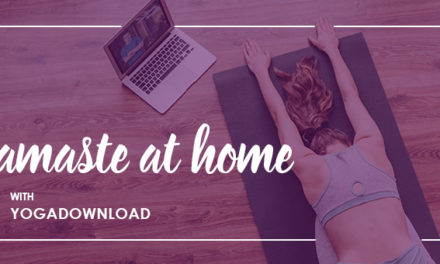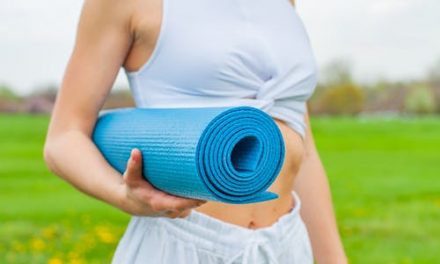Can your breathing become the foundation for a healthy mind and body?
The role of breathing
Every time you breathe, your lungs draw oxygen from the air and pass it on to your blood. The blood transports the oxygen to cells throughout the body that will provide energy again. Oxygen feeds every part of the body. Thus, our breath is quite literally our life force.
Breathing deeply and slowly will relax you, while instantly sending powerful doses of oxygen to the brain and every single cell of the body. Carbon dioxide is poisonous to our body in high amounts and that’s exactly why we breathe in oxygen and breathe out carbon dioxide.
Muscles that control the movement of the lungs are
- the diaphragm (a sheet of muscle underneath the lungs)
- the muscles between the ribs.

Breathing pattern under stress
When a person is under stress, their breathing pattern changes. Typically, an anxious person takes small, shallow breaths, using their shoulders rather than their diaphragm to move air in and out of their lungs. For a short period of time, stress cannot hurt. But if you suffer from stress for a long time, this can lead to many different complaints.
The problems of wrong breathing
Because your breathing affects your entire body, there can be all kinds of vague and visible complaints if you breathe incorrectly, like for example:
– fatigue
– reduced eye health
– respiratory complaints
– small inflammations
– a disturbed nervous system.
Controlling your breathing can help to improve some of these symptoms. Good breathing is fundamental to your health. Just like nutrition, exercise, and sleep. And if you improve your breathing you automatically improve the quality of your life.
Why should you breathe with your diaphragm
(through the abdomen)
By breathing from your belly:
– you automatically become calmer
– it reduces stress as it is the natural way to breathe
– your lungs can do their job better
– you massage your organs and you feel calmer
How to recognize incorrect breathing?
– You breathe regularly through the mouth and not through the nose.
– You sigh or yawn regularly.
– You sometimes feel dizzy or light-headed.
– You hold your breath and/or breathe irregularly.
– You breathe shallowly and not through the belly.
– You breathe quickly.
– You make a lot of noise while breathing.
Why breathing exercises work for stress
The nervous system gets over-stimulated by stress. Your body cannot feel relaxed and stressed at the same time. During breathing exercises, you focus only on the breath. Your mind is not concerned with other concerns or getting lost in the thousands of thoughts that fly through your brain. Instead, you are only attuned to that breath … to the slow, deep breath and calm, relaxing breath.

Reduce stress without medicines
Reducing stress through breathing is a very good and natural option. It does not require pills or medicines. When you go to the doctor to do something about the stress, you often get medicines to calm yourself down or to suppress the symptoms of the stress. For example, pills against high blood pressure. These drugs are often effective, but they only suppress the symptoms.
Yoga and meditation can help you to learn to breathe properly
With yoga and meditation, you learn how to influence the nervous system. The power of breath has been known in India for thousands of years Breathing is the bridge between your physical body and what is on the inside. The breathing of Yoga thus connects the body and mind. And only by combining these elements in an asana, you can experience Yoga optimally. You won’t fully experience the benefits of yoga without first learning how to breathe properly.
Tips for good breathing
– Breathe using the diaphragm
– Breathe through your nose
– Make the inhalation as long as the exhalation
– Breathe smoothly and calmly
– Closing your eyes can help focus on your breathing.

Pranayama
prāṇa = life force, the first smallest unit of energy
ayāma = control, dimension
Pranayama is a term from the yoga practice that means conscious control of the breath. Pranayama is also to let go of the breath or regulate the breath. Not all breathing exercises are Pranayama. Only when an exercise contains retention with a lock can we speak of pranayama.
The practice of pranayama has two main goals in yoga:
– Physically: bringing more oxygen into the blood, so that more oxygen is supplied to the brain.
– Mystically: the pranayama techniques aim to control prana.
Basis of pranayama:
The yogis practicing the complete mastery over mind and body came to the conclusion that when the breath moves, the mind moves and when the breath stops, the mind stops. So whosoever wants to still the mind should bring his/her breath under complete voluntary control.
5 Yogic Breathing techniques
Diaphragmatic (Belly) Breathing
With this breathing, you push your abdomen out with your diaphragm with each exhalation so that there is more space for your lungs to fill with air. This allows you to breathe longer and deeper, in contrast to the more superficial chest breathing.
How does this breathing exercise work?
Hold one hand to your chest and the other to your stomach
Breathe deeply through the nose, so that your lungs fill up and your diaphragm expands so that you feel your abdomen move with your hand.
Aim for 6 to 10 deep breaths per minute for 10 minutes a day.
You can do this exercise sitting, standing, and lying down.
Benefits: Belly breathing has a calming effect on the mind while, at the same time, potentially strengthens the diaphragm, relieves stress, refreshes the mind, and activates the parasympathetic nervous system, encouraging a calmer, more balanced state of being overall. It also helps to correct unhealthy breathing patterns.

Anuloma Viloma (Alternate-nostril breathing)
This is not a Pranayama, but a preparation for the Pranayama called Nadi Sodan.
Anuloma Viloma aims to create a balance between the left and right halves of your brain. The exercise provides deep relaxation.
Breathing deeply and evenly through both nostrils helps to synchronize both sides of the brain. The right nostril tends to stimulate the left side of the brain and the left stimulates the right side of the brain. Research has proven that the brain swaps the dominant nostril we breathe through every 90 minutes.
How does this breathing exercise work?
It is best to do this exercise while sitting, in a comfortable position. Try this technique at the end of an asana sequence to prepare the mind for meditation
Close your eyes
Close your right nostril with your right thumb and breathe deeply through your left nostril
At the “peak” of your inhalation, close your left nostril with your right ring finger
Then exhale with your right nostril
Keep it up: inhale through your right nostril, seal it with your thumb and exhale through your left nostril.
Continue breathing this way, i.e. alternately from left and right nostrils, for one to three minutes.
Benefits: The respiratory passage is cleaned and this prepares one well for the practice of other pranayamas. Breathing becomes easy and regulated. The mind becomes clear and the heartbeat rhythmic. It lowers blood pressure and also aids in enhancing concentration, memory, and other mental faculties.
Releases accumulated stress in the mind and body effectively and helps in releasing accumulated tension and fatigue. It helps harmonize the left and right hemispheres of the brain, which correlates to the logical and emotional sides of our personality. Maintains body temperature.

Kumbhaka (breath retention)
At Kumbhaka pranayama, breathing is suspended. This can happen both after full inhalation or exhalation, but also during breathing.
How does this breathing exercise work?
Inhale, inflating the lungs as fully as possible.
Hold the breath for 10 seconds.
After 10 seconds, inhale a little more.
Then hold it for as long as you can.
Benefits: With this technique, you increase pressure inside your lungs and gives them time to increasing their capacity. As a result, the blood that then travels to the heart, brain, and muscles will be more oxygenated.
Ujjayi (Ocean Breath)
This classic pranayama practice, known for its soft, soothing sound similar to breaking ocean waves.
How does this breathing exercise work?
Inhale through your nose, then open your mouth and exhale slowly, making a “ha” sound. Try this a few times, then close your mouth, keeping the back of your throat in the same shape you used to make the “ha,” as you exhale through the nose. You hear a grinding sound in your throat. Keep your inhalations and exhalations equal in duration.
Benefits: can further enhance the relaxation response of slow breathing. Releases tension throughout the body and regulates heating and cooling of the body. Thanks to the Ujjayi breathing you are still able to breathe deeply in physically challenging poses while practicing yoga
Kapalbhati (Breath of Fire)
This rapid breathing technique is energizing and activates the sympathetic nervous system.
How does this breathing exercise work
To start, take a full, deep inhalation and exhale slowly. Inhale again, and begin exhaling by quickly pulling in the lower abs to force air out in short spurts.
You pull your navel towards the spine so that the air is pushed out of your nose with force. You use your abs for this. Keep your shoulders and chest still. The movement is only in your abdominal area. – Your inhalation will be passive between each active, quick exhalation. Start with 25–30 exhalations.
Benefits: Mental Health and Emotional Stability, Better Digestive System, and Improved Blood Circulation. The mind becomes calmer and sharper.





Did you find this post useful, inspiring? Save one of these pins above to your healthy lifestyle board on Pinterest.





0 Comments
Trackbacks/Pingbacks